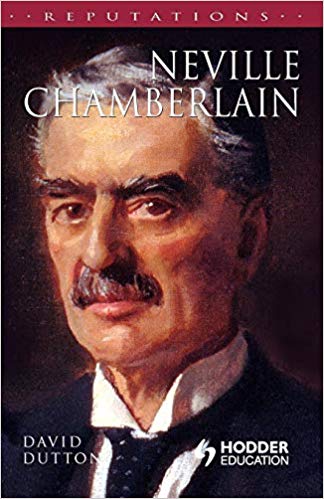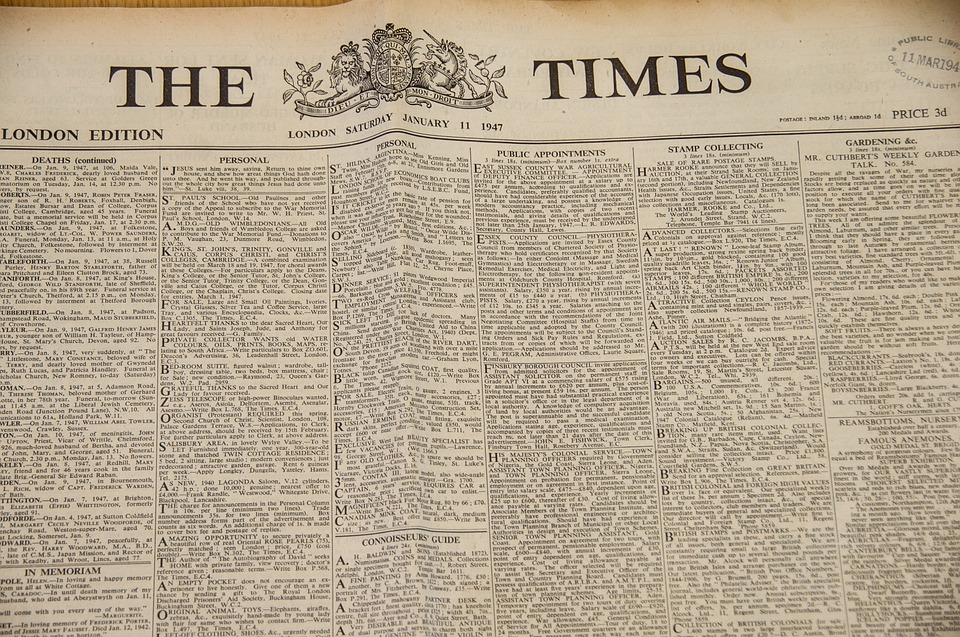I have been asked to write a blog post about Neville Chamberlain to commemorate his birth 150 years ago. I knew very little about him, although my interest was piqued by the 2017 film Darkest Hour in which Chamberlain is portrayed as exhausted, ill and overshadowed by the irascible, bullish and eccentric Churchill. I felt immense sympathy for him. Like a magpie looking for shiny things, I had ‘collected’ Churchill. He loomed large in my imagination. I had visited Chartwell, his Kentish home, I have admired his garden and his paintings, I had gone to a film about him, I had even bought the book. Would I have watched Darkest Hour if it had been billed “the story of Neville Chamberlain”? Possibly not. Had I been guilty of lionizing Churchill at the expense of Chamberlain?

According to a review of Darkest Hour in The New Statesman: “The movie looks terrific and has an air of authenticity, yet it plays fast and loose with the truth.” (19th January 2018). The New Statesman has been published since 1913 and has the strap line “Enlightened thinking in dark times”. You can find back runs from 1996 onwards on Business Source Premier one of the library’s subscription Databases. I felt that I should investigate the real Neville Chamberlain rather than rely on the movie – what should I know about the man whose voice had become so familiar to me through countless war films. You can read a transcript of the speech in which he declares “this country is at war with Germany” at the BBC Archive or listen to the speech on YouTube
I started with a Wikipedia article – mainly because I wanted a quick fix. It’s 30 pages long and ram-packed with information. Perhaps too much information for starters, but a springboard for an abecedarian like myself. It gave me a feel for the sorts of things I might want to follow up. I yawned through his early life –he had little interest in his studies, became an accountant, a salaried employee and ran a failed sisal plantation. I perked up a bit when he fell in love and got married, but only slightly. I could tell this was going to be a tough one; the unpunctual, careless, naughty Churchill seemed far more exciting.
The Oxford Dictionary of National Biography (available via Find Databases on LibrarySearch) has a warmer more engaging account of Chamberlain’s early life and the ‘haven of security and affection’ that surrounded him. (Crozier, 2018) He is described as quite a leader at home among his younger siblings. I wonder if he was charismatic, persuasive or just downright bossy. I began to like the man as he felt more real to me. The Wikipedia article had lost sight of Neville’s siblings. I found no mention of his sisters at all and had imagined him as a lonely child, having only one much older half-brother. This is one occasion which clearly demonstrates that relying on one source is not a good idea, and choosing an authoritative source that has been edited is better.
I decided to check LibrarySearch, the university’s online discovery tool. Augustine House Library has three seminal works about Chamberlain: Keith Feiling’s The Life of Neville Chamberlain published in 1946, six year’s after Chamberlain’s death; David Dilks’ Neville Chamberlain, published in 1984, and David Dutton’s Neville Chamberlain, published in 2001. There are five other books, but these are less biographical and focus on appeasement and British foreign policy. I decided to stay closely focused on Chamberlain, the man and his life, rather than the wider political debates, although I acknowledged that it might be difficult to separate the two. I liked the possibilities that these biographies offered – one published so close to his death offered the potential of first-hand accounts, but might tend towards eulogy whereas the others had the potential to offer fresh evidence revealed over the fullness of time. You can find these books at 942.0840924 on the third floor.
The preface to the Feiling biography of Chamberlain is revealing. Feiling was commissioned to write the biography by Mrs Chamberlain as she desired an authentic account of her husband’s life and therefore he was given untrammelled access to Neville’s papers. However, as Feiling acknowledged the book was based on private papers because the official sources “neither the archives of the British government, its allies and its foes, not the correspondence of contemporary statesmen” were available. (Feiling, 1946, p.v). I enjoyed the accounts of his early career – the bliss of smoking a cigar on a moonlit wharf and selling Christmas crackers, trimmed hats and pink satin boots in a shop in the Bahamas. However, I knew I must read more widely if I were to gather my evidence.
I turned to David Dutton’s book. It is part of a series entitled “Reputations” and clearly states in the introduction, “In defining the purpose of this book it is perhaps best to begin by stating what it is not. It should not be seen as a biography of Neville Chamberlain.” (Dutton, 2001, p.1) I realised this was not going to give me any fresh evidence about his childhood, which is where I wanted to start, so I decided to move on to David Dilks book. Dilks’ book covers the years 1869-1929 and includes charming stories about Chamberlain’s childhood. We learn about his Aunt Lina, his nursemaid Kate Bird and “milk and biscuits” in the nursery. Sadly Neville’s mother died when he was five. I wonder about the quotation “Give me a child until he is 7 and I will show you the man”. How much does our childhood influence us?
My next port of call was Google Books as I wanted to know if there had been any more recent biographies. I found Robert Self’s biography of Neville Chamberlain published by Routledge in 2017.
In one of the preview chapters there is a quotation from Chamberlain in which he laments: “If ever a proper life of me is written there will still I suppose be 20 years during which my doings were of no intrinsic public interest.” (Neville to Ida Chamberlain, 20 January, 1940, quoted in Self, 2017). Poor, Neville, even he doubted he had the wow factor. I could put in a Document Delivery request via LibrarySearch for the title, but as this is about quick, bloggable research and no one is going to mark me on this, I decided to save that for a rainy day. If it were an extended essay….. well, I might just request it… (I’m just saying…)
Another source that I really shouldn’t ignore is the Bibliography of British and Irish History available via Find Databases on LibrarySearch. A 2015 book The Chamberlains: Joseph, Austen and Neville, 1836-1940 catches my eye among the 190 results. Another one to add to the wish list.
Although I know that much of the primary source material will have been picked over by other researchers, I still like to look at things afresh. Biographers select and reject information when compiling a biography, and there might be something of interest that I would like to feature in my blog, that has been rejected by others. We have the Times Digital Archive 1785-2012 via Find Databases on LibrarySearch. There are over 4,000 articles for a search on Neville Chamberlain. I limit to the years of his life 1869-1940. I can see looking at bar chart of Publication Years that over a quarter of the articles which include his name are written in the 1930s. Nevertheless, I decide to find out more about Chamberlain’s life in the Bahamas so I search for the word Bahamas within the results. There is an article in The Times on the 1st April 1891 which reports that Neville Chamberlain “had spent two months investigating the capabilities of the various islands, with the result that Mayaguana was purchased.” Chamberlain, on the instructions of his father, had been looking for land to grow sisal.
Next, I decide to try the UK Parliamentary Papers (available via Find Databases). They can be a bit of a chew if you don’t know exactly what you are looking for, so it’s best to do some preparatory research first. I looked at the Members, Offices and Constituencies search and did a Look up for Chamberlain. I’m glad I did, as I was to discover there have been 5 members with this surname. Neville Chamberlain made 1,100 contributions to Commons debates (recorded in Hansard, the official record of debates) over a 21-year period. Good to know he wasn’t sleeping on the job. However, you really need to have an idea what you are looking for with this source, so it’s best to choose a topic or to have a date range in mind. I find more information about Mayaguana, sisal and the government interest in its cultivation, but I begin to wonder how more time should I spend in this search for string?
I’m growing weary of string production and need a break from reading in general. I visit the site Box of Broadcasts (BoB), the on demand TV and radio service for education. A quick search for Neville Chamberlain found quite a few TV and radio documentaries of interest. I first decide to listen to the BBC Radio 4 episode of Great Lives. The synopsis intrigued me “The writer and critic AA Gill nominates Neville Chamberlain as his great life. But, his choice is someone who is regarded as one of the worst Prime Ministers Britain ever had. Chamberlain, is someone entrenched in popular legend, as the man who failed to stand up to Hitler. So will AA Gill’s choice stand up to the scrutiny and will he be able to convince presenter Matthew Parris that this was a great life. To help tell the story of Neville Chamberlain they are joined by Stuart Ball, Professor of Modern British History at the University of Leicester.” I was kept interested by the lively debate throughout. You can have a listen via BoB.
Spurred on I watch a documentary “Time to Remember: The Pursuit of Peace“. Using material from the 1950s newsreel documentary series Time to Remember the story of the struggle to maintain peace in the decades after the Great War is told. Not only featuring Chamberlain’s negotiations with Hitler it includes footage of the signing of the Treaty of Versailles; the first Armistice Day parade in 1919; Ramsay MacDonald addressing the League of Nations in 1924; the liberations of Rome and Paris in summer 1944; the signing of the German surrender in 1945; and the signing of the United Nations charter. Seeing footage from the time is fascinating but leaves me wanting to find something more in depth about the Munich negotiations. Through BoB I find an episode of the BBC 4 series Summits. In the episode David Reynolds, Professor of International History at Cambridge University, examines the Munich 1938 negotiations in detail and it’s role on how Chamberlain would become perceived through history.
Finally, I decide to take a light-hearted peak at Chamberlain’s political life by searching the British Cartoon Archive, which is available online from the University of Kent. I find a wonderful array of cartoons including one of Chamberlain surrounded by paperwork and with the caption “One of the things I have a bone to pick with the dictators about is – they leave me so little time for reading (The Prime Minister)” (Evening Standard, 5 May 1939).
If you would like to know more about Neville Chamberlain, try searching LibrarySearch for books, articles and newspaper articles. There are so many sources available beyond a Google search.
 Library
Library Michelle Crowther
Michelle Crowther 605
605






